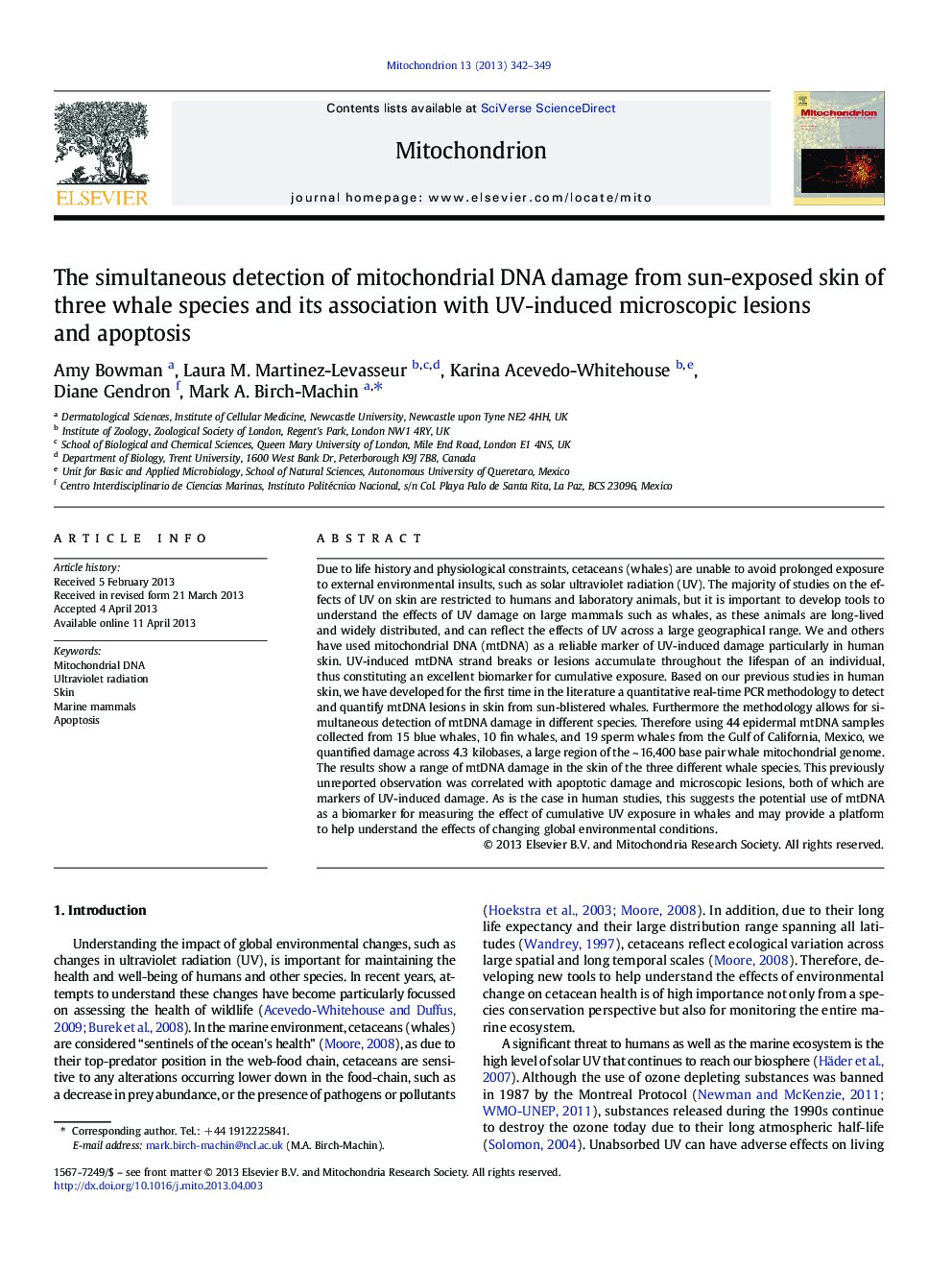| کد مقاله | کد نشریه | سال انتشار | مقاله انگلیسی | نسخه تمام متن |
|---|---|---|---|---|
| 10883074 | 1078347 | 2013 | 8 صفحه PDF | دانلود رایگان |
عنوان انگلیسی مقاله ISI
The simultaneous detection of mitochondrial DNA damage from sun-exposed skin of three whale species and its association with UV-induced microscopic lesions and apoptosis
دانلود مقاله + سفارش ترجمه
دانلود مقاله ISI انگلیسی
رایگان برای ایرانیان
کلمات کلیدی
موضوعات مرتبط
علوم زیستی و بیوفناوری
بیوشیمی، ژنتیک و زیست شناسی مولکولی
بیوفیزیک
پیش نمایش صفحه اول مقاله

چکیده انگلیسی
Due to life history and physiological constraints, cetaceans (whales) are unable to avoid prolonged exposure to external environmental insults, such as solar ultraviolet radiation (UV). The majority of studies on the effects of UV on skin are restricted to humans and laboratory animals, but it is important to develop tools to understand the effects of UV damage on large mammals such as whales, as these animals are long-lived and widely distributed, and can reflect the effects of UV across a large geographical range. We and others have used mitochondrial DNA (mtDNA) as a reliable marker of UV-induced damage particularly in human skin. UV-induced mtDNA strand breaks or lesions accumulate throughout the lifespan of an individual, thus constituting an excellent biomarker for cumulative exposure. Based on our previous studies in human skin, we have developed for the first time in the literature a quantitative real-time PCR methodology to detect and quantify mtDNA lesions in skin from sun-blistered whales. Furthermore the methodology allows for simultaneous detection of mtDNA damage in different species. Therefore using 44 epidermal mtDNA samples collected from 15 blue whales, 10 fin whales, and 19 sperm whales from the Gulf of California, Mexico, we quantified damage across 4.3Â kilobases, a large region of the ~Â 16,400 base pair whale mitochondrial genome. The results show a range of mtDNA damage in the skin of the three different whale species. This previously unreported observation was correlated with apoptotic damage and microscopic lesions, both of which are markers of UV-induced damage. As is the case in human studies, this suggests the potential use of mtDNA as a biomarker for measuring the effect of cumulative UV exposure in whales and may provide a platform to help understand the effects of changing global environmental conditions.
ناشر
Database: Elsevier - ScienceDirect (ساینس دایرکت)
Journal: Mitochondrion - Volume 13, Issue 4, July 2013, Pages 342-349
Journal: Mitochondrion - Volume 13, Issue 4, July 2013, Pages 342-349
نویسندگان
Amy Bowman, Laura M. Martinez-Levasseur, Karina Acevedo-Whitehouse, Diane Gendron, Mark A. Birch-Machin,